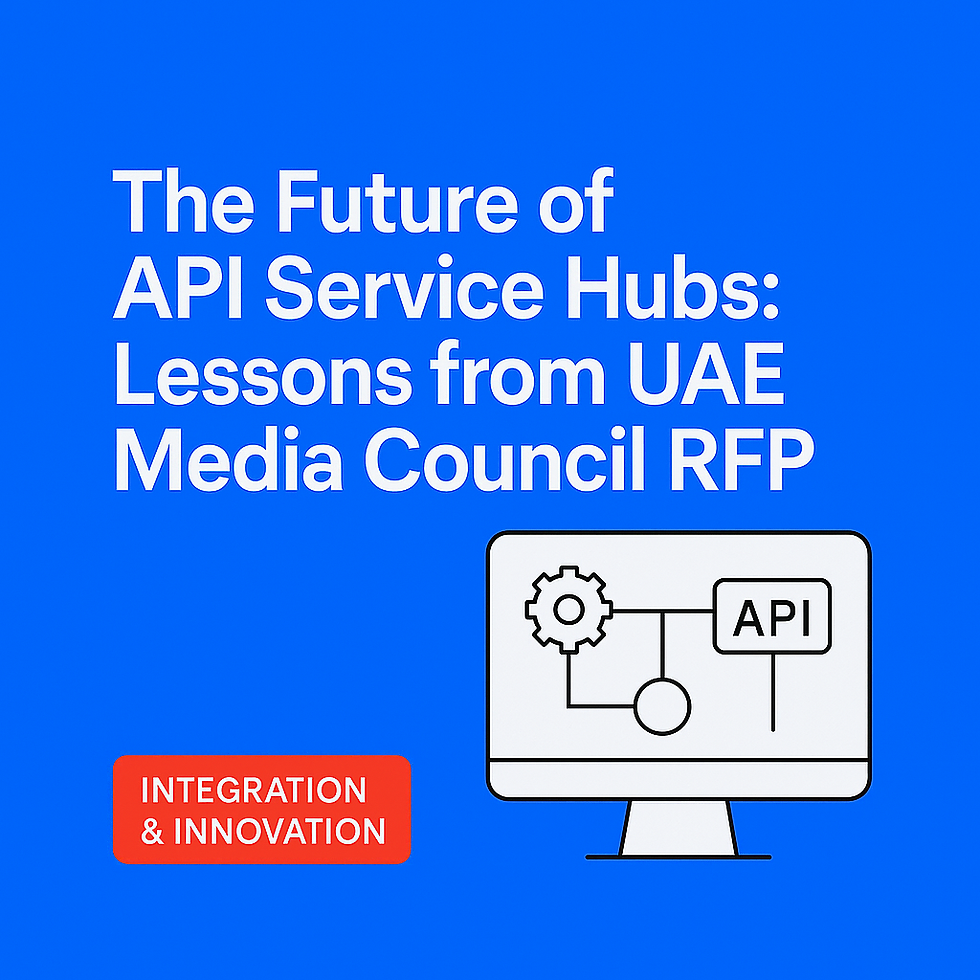- Cognigate Advisory Team

- Aug 28
- 3 min read

Introduction: The Hidden Power Behind Every Digital Experience
When organizations talk about digital transformation, the spotlight usually falls on shiny technologies — AI, cloud platforms, chatbots, or customer-facing apps. Yet, beneath every seamless citizen service, retail transaction, or enterprise workflow lies an invisible enabler: integration.
Gartner underscores this point:
“By 2026, 80% of digital transformation failures will be caused by integration challenges.”
Integration doesn’t make headlines, but it makes everything else possible. Without it, digital transformation collapses under silos, inefficiency, and frustration.
Why Integration Is Often Overlooked
Executives and project sponsors tend to underinvest in integration for three reasons:
It’s Invisible — Customers never see the APIs or data flows.
It’s Complex — Legacy systems, cloud platforms, and compliance create hidden barriers.
It’s Seen as “Plumbing” — But in reality, it’s the nervous system of transformation.
McKinsey puts it plainly:
“Integration speed is now one of the top determinants of digital transformation success.”
The Cost of Ignoring Integration
When integration is neglected:
Government services suffer — citizens face duplicate logins, missing data, or inconsistent records.
Telecom operators struggle — legacy billing systems don’t sync with modern CX platforms.
Retailers lose revenue — loyalty apps don’t talk to POS or e-commerce systems.
Employees feel frustrated — needing to manually re-enter data across systems.
PwC highlights the risk:
“54% of executives say lack of integration across applications is the biggest barrier to digital transformation ROI.”
Cognigate’s Perspective: Integration as HX Enabler
At Cognigate, we see integration not as a back-office task, but as the enabler of Human Experience (HX):
Citizens shouldn’t care which system holds their data — they just want fast, reliable services.
Employees shouldn’t waste hours reconciling systems — they want tools that work in harmony.
Customers don’t want fragmented journeys — they expect one seamless relationship.
“Integration should be invisible to users, but its impact should be unforgettable.” — Cognigate
How Integration Drives Transformation
1. Customer Experience
A telecom operator that integrates CRM, billing, and CPaaS ensures customers see one unified bill and can resolve issues through WhatsApp instantly.
2. Employee Experience
A government agency that integrates HR, ITSM, and productivity apps reduces ticket resolution times by 40%, improving employee satisfaction.
3. Data-Driven Decisions
A university that integrates ERP, student portals, and analytics platforms empowers leaders with real-time insights into enrollment and performance.
Technology Choices: Cloud, On-Prem, Hybrid
Different strategies serve different needs:
Cloud (iPaaS): Fast, scalable, cost-effective.
On-Prem: Secure, compliant for highly regulated sectors.
Hybrid: The most common in MENA, balancing agility and data residency.
Platforms Cognigate configures — Peliqan, Boomi, Freshworks, Creatio — enable this balance depending on sector and compliance needs.
Regional Context: UAE and MENA
UAE Smart Government initiatives rely heavily on integration to deliver seamless portals.
Saudi Vision 2030 highlights API ecosystems as critical enablers of innovation.
Enterprises in banking, telecom, and retail are modernizing legacy systems while adopting SaaS — making hybrid integration inevitable.
IDC forecasts:
“API and integration spending in the Middle East will grow at a CAGR of over 15% through 2027.”
Executive Playbook: Making Integration a Priority
Step 1 — Make Integration Board-Level
Don’t treat it as plumbing. Position it as a CX and ROI enabler.
Step 2 — Map Human Journeys
Start from the citizen, employee, or customer perspective. Where does data need to flow seamlessly?
Step 3 — Invest in Scalable Platforms
Choose solutions like Boomi or Peliqan that can grow with your ecosystem.
Step 4 — Build Governance
APIs and integrations need policies for security, monitoring, and compliance.
Step 5 — Measure Impact
Track outcomes: reduced waiting times, improved adoption, faster decision-making.
Conclusion: Integration as the Silent Hero
Integration rarely makes the headlines in transformation projects, but it quietly powers every success story. Without it, digital strategies remain disconnected. With it, organizations can truly deliver on their promises to citizens, employees, and customers.
Gartner’s reminder is clear:
“Integration is the enabler of digital business. Without it, digital transformation stalls.”
At Cognigate, we believe integration is not just an IT function — it is the unsung hero of transformation, making human experiences seamless, trustworthy, and future-ready.


